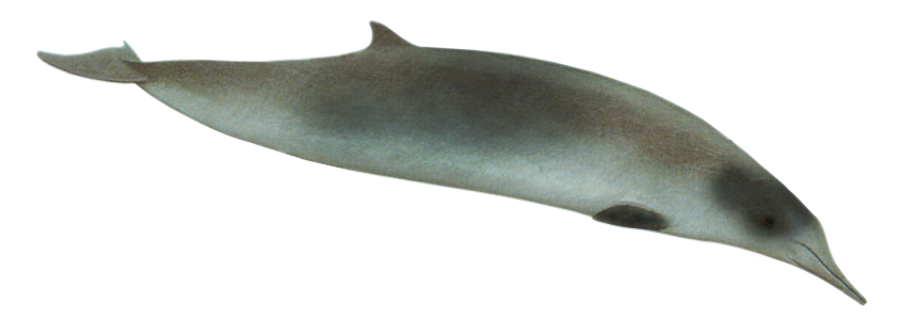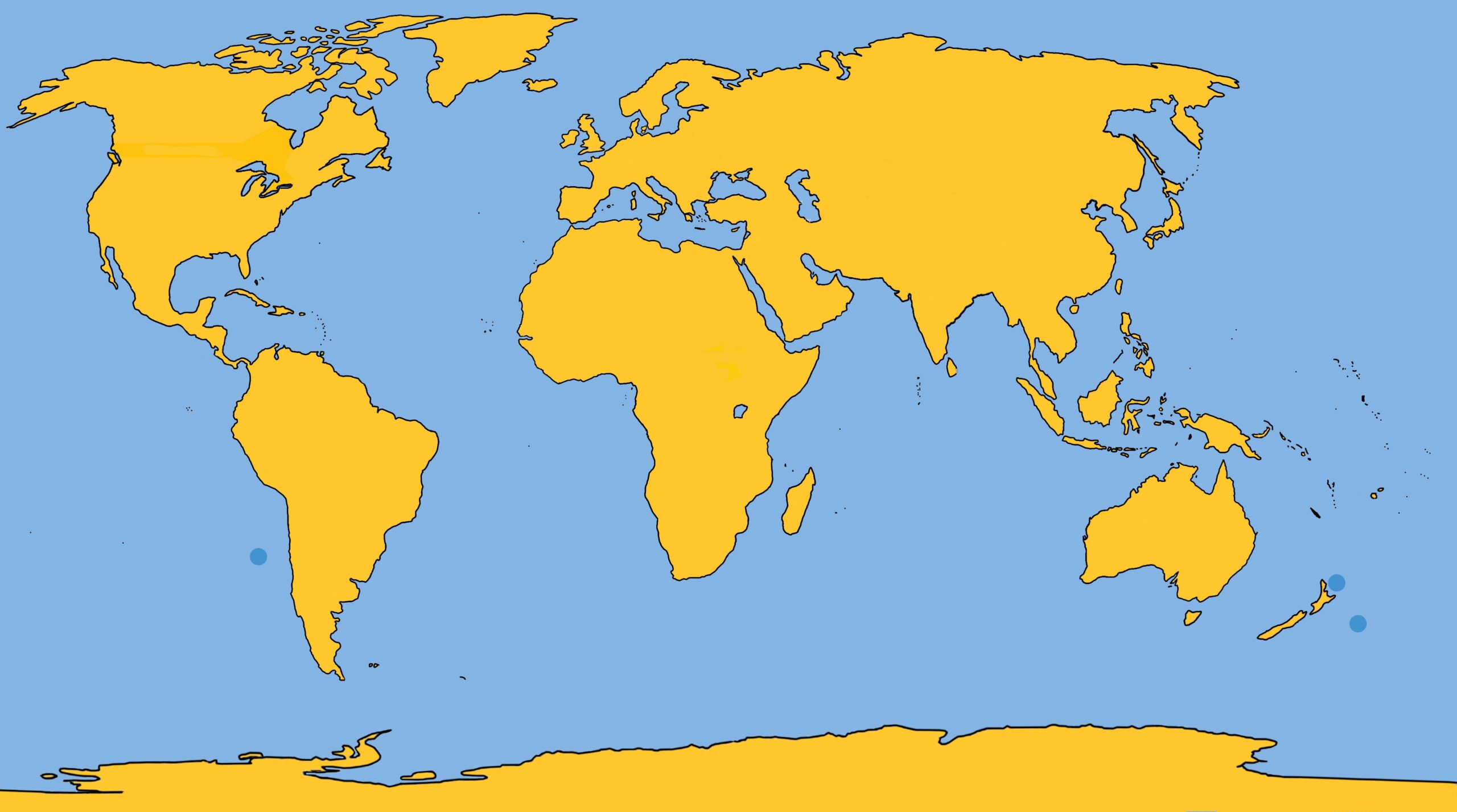 Family: Ziphiidae
Family: Ziphiidae
Genus: Mesoplodon
Species: M. traversii (Gray, 1874)
Considered the rarest of all beaked whales, the spade-tooth beaked whale was first named from a partial jaw found in Pitt Island, New Zealand in 1872, and was thought at the time to be a specimen of Gray’s beaked whale. When a female and her calf stranded on Opape Beach, Bay of Plenty, New Zealand, in December of 2010, DNA evidence confirmed the new species.
Physical Description: Stocky body. The lower jaw extends slightly ahead of the upper jaw. The throat displays the typical wishbone indentation.
Color: Light gray all over, with very dark patches around the eyes and along the forehead. The flippers are very dark as well, and the flanks are somewhat darker than the rest of the body.
Fins and Flukes: The small falcate dorsal fin is located three-quarters the way down the length of the body. It is triangular and falcate at the tip. Thin flippers appear disproportionately small compared with the body. Well-developed flukes are pointed at the tips, with no median notch.
Length and Weight: The stranded female was 17 ft. (5.2 m) in length.
Teeth: Two large wide teeth at tip of lower jaw, measuring 9 in (23 cm).
Feeding: No information available; presumed to include squid.
Breathing and Diving: No information available.
Mating and Breeding: No information available.
Herding: Groups of up to 10 are likely.
Distribution: Known from strandings at Bay of Plenty and Pitt Island in New Zealand, and Robinson Crusoe Island off the coast of Chile.
Migration: No information available.







